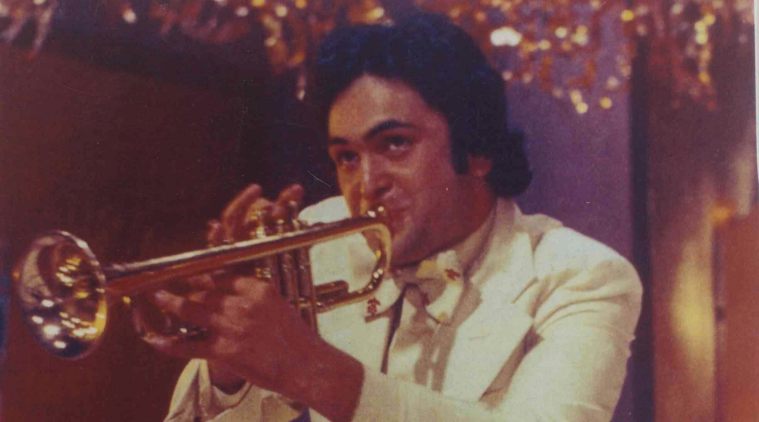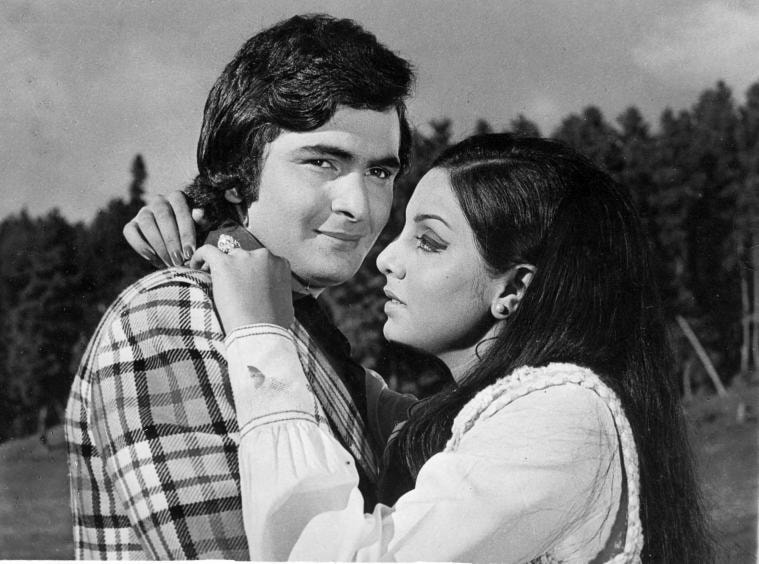 Rishi Kapoor passed away on April 30. (Express archive photo)
Rishi Kapoor passed away on April 30. (Express archive photo)
Legendary actor Kamal Haasan had said in an interview many years ago that Rishi Kapoor was one of the most underrated despite being one of the finest actors and that he really didn’t understand why it was so. On the day when one of the most boisterous of Kapoors bid adieu to the world, there can’t be a better tribute to Rishi Kapoor than recalling Haasan’s observation made years ago.
While few have looked at Rishi Kapoor as an actor of some innate strength that remained vastly untapped, there are no two opinions about him being one of the most popular stars ever. That he came across to most as a “chocolate hero” with a charm that could instantly floor any girl is an injustice. He rather proved to be an anti-thesis of that image in many roles that he essayed, albeit by exception, in films like Prem Rog (1982), Sargam (1979) and Ek Chadar Maili Si (1986). In a sense his looks had blocked his forays into genuinely good acting-oriented films. In that he stood quite in sharp contrast to his legendary father Raj Kapoor, who often played a poor man to popular delight.
A bundle of youthful energy, Rishi Kapoor symbolised a new smart and starry-eyed generation of Indians, whose body language exuded confidence coupled with style in an era that had witnessed a transition of Bollywood from romance to action. Wearing distinctively urban looks, he smiled his way to professional success beginning with blockbuster musical Bobby (1973) till his last big film Heena (1991) hit the screens. He could be seen as the hero, who paved the way for an ebullient post-liberalisation generation of actors that more or less resembled him in their energetic style of acting.
 No wonder Rishi emerged as the hero to have had most number of actresses as his heroines in Hindi films. (Express archive photo)
No wonder Rishi emerged as the hero to have had most number of actresses as his heroines in Hindi films. (Express archive photo)
At his very core, Rishi Kapoor remained a romantic hero. He had actually turned the tide of the sixties and seventies, when romance unmistakably ruled storylines of Hindi films but with female beauties playing the charmer and the hero singing peans to them. With Bobby (1973), Rishi proved that the honours of charm lay equally on both sides. He went on to tilt the charm-scale highly in favour of the male like never before. It was Rishi, who had made the female charm play second fiddle in most of the films he did. Chandni epitomised that like never before. Rarely was the ultimate charm of Sridevi eclipsed by her hero like Rishi did in Chandni, not to speak of the other leading ladies he played the hero for. No wonder Rishi emerged as the hero to have had most number of actresses as his heroines in Hindi films.
There was one man who started it all before Rishi did – superstar Rajesh Khanna. But Khanna’s charm lasted only for about four years while Rishi’s innings lasted for about two decades. What makes Rishi’s tryst with romance more appealing is the fact that it panned out wide in an era where romance was replaced by action. As Rishi had himself recalled, his success lay in the fact that it was achieved in an era so completely dominated by action-packed Amitabh Bachchan. In films like Amar Akbar Anthony (1977) and Naseeb (1981), where he played Amitabh’s younger brother, Rishi could carve out his own niche.
 Rishi Kapoor and Neetu Singh in Rafoo Chakkar. (Express archive photo)
Rishi Kapoor and Neetu Singh in Rafoo Chakkar. (Express archive photo)
Rishi’s romance also sought to push the limits with songs like “Khullam khulla pyar karenge” from Khel Khel Mein (1975) which proved to be a chartbuster. His pairing with an equally boisterous Neetu Singh uninhibitedly exhibiting love in the open was later to blossom into a companionship that brought curtains down on the career of a fine actress in the typically conservative family tradition of the Kapoors. Despite that, however, the two never ceased to be a made-for-each-other pair.
That Rishi titled his autobiography as “Khullam Khulla” was an ode, among other things, to his flambuoyant love story with Neetu. And make no mistake, Rishi remained equally khullam khulla with his views off screen.
What also made Rishi Kapoor special was his dancing skills. In fact, it was he who established dance as an essential element of a successful film, much on the lines of the role music played in the pre-70s era. Heroes, including Rajesh Khanna, could rarely dance as good as Rishi did. Of course, being a Kapoor, he had it in his blood, but he excelled in it like none of his elders did. Hum Kisise Kum Naheen (1975) was the crowning glory of his excellence in dancing.
Subhash Ghai did cast him in his action thriller Karz (1980), but not without making him punctuate it liberally with dance and romance.
 Rishi Kapoor in a still from Karz.
Rishi Kapoor in a still from Karz.
True that he had a rich family legacy and a godfather like legendary Raj Kapoor, but attributing his success solely to it would not only be unjust but uncharitable too for Rishi. Watch him closely even in the most mundane of roles. He had all the trappings of a very expressive actor, who could change facial expressions in a flash, much like Raj Kapoor. But unfortunately, his career coincided with an era that was marked by mediocrity. It was just that he got trapped in there till his career ran out of steam. But as soon as Hindi films witnessed a new wave, Rishi was back as an elder. Having put on weight — being an uncompromising foodie that he is like a true Kapoor, Rishi was back in the reckoning with films like Do Dooni Chaar, 102 Not Out and Mulk that gave the actor in him the chance that he richly deserved. And he proved that he had it in him. Haasan, who had acted alongside him in Saagar (1985), couldn’t have got it wrong after all.
Unsurprising that he had himself, of late, said he had finally got the real chance to put his acting skills to test. And how well he proved it. He could have possibly displayed much more of his untapped potential, but cancer cut short his new innings abruptly. Nonetheless, Rishi Kapoor was truly reborn as an actor before he died.